Limoge
For many masters of the art world, scenes of a lake, forest or even a tree has brought them great fame and fortune. But there are some other works of art by these same artists where the model is the focus yet in many instances we know nothing about these subjects. Well, it’s time to give these models their due, so here are twelve models from famous paintings and their stories:
American Gothic (1930) - Grant Wood

The story of American Gothic begins with a trim white cottage in Eldon, Iowa, that Grant Wood, an Iowa-born artist with European training, spotted from a car window in August 1930. He decided to paint the house along with “the kind of people I fancied should live in that house.” Wood recruited his sister Nan as a model for the woman, dressing her in a prim, colonial-print apron. He based the man on his stern-looking Cedar Rapids dentist, Byron McKeeby, whom he posed in a black jacket, collarless shirt, and clean denim overalls. What’s interesting however, is that Wood modeled each element of the painting separately—Graham and McKeeby never actually stood together in front of the house! Also interestingly, it was said that Nan Wood was embarrassed at being depicted as the wife of someone twice her age, and began telling people that the painting was of a man and his daughter. In a letter written by Grant Wood in 1941, he seems to confirm that the woman is indeed the man’s “grown up daughter”. Nevertheless, the painting became one of the most famous images in the world and one of the most parodied.
Pinkie (1794) – Thomas Lawrence

Pinkie is the portrait of Sarah Barrett Moulton, who was approximately eleven years old when she was painted. Sarah was the daughter of a wealthy Jamaican plantation owner named Charles Barrett Moulton. She was born and raised in Jamaica, and traveled to England to further her education. While in England her grandmother commissioned Thomas Lawrence to paint the, now famous, portrait. Sadly, Sarah died on April 23, 1795, just one year after the portrait was completed, due to whooping cough, which she most likely contracted from one of her brothers. Her brother Edward, who would later own the portrait, changed his surname to Moulton-Barrett and became the father of one of the most prominent poets of the Victorian era, Elizabeth Barrett Browning, making Sarah Elizabeth’s aunt.
The Scream (1893)- Edvard Munch

As anyone who has gazed at The Scream can attest, it’s rather difficult to tell whether the figure is that of a man or a woman, Well, turns out the answer is…neither. According to a page in his diary, Munch described his inspiration for the image thusly: “I was walking along a path with two friends — the sun was setting — suddenly the sky turned blood red — I paused, feeling exhausted, and leaned on the fence — there was blood and tongues of fire above the blue-black fjord and the city — my friends walked on, and I stood there trembling with anxiety — and I sensed an infinite scream passing through nature.” Nice. Another inspiration that has been suggested for this figure is a Peruvian mummy, which Munch could have seen at the 1889 Exposition Universelle in Paris.
Whistler’s Mother (1871) – James McNeill Whistler

Most would consider Whistler’s Mother a strictly all American iconic symbol. However, many are not aware that she was actually painted, and died, outside the US. Anna McNeill Whistler was born in 1884 in North Carolina. In 1831, Anna married widower George Washington Whistler and soon gave birth to two sons, James and William. In 1842 the family moved to Russia when her husband was hired as a railway engineer. After her husband died from cholera in 1849, she returned to the US to live in Connecticut. During the Civil War, Anna crossed lines to be with William, who was a surgeon in the Confederate Army. She then went to London where James moved after getting kicked out of West Point. Anna encouraged his painting and agreed to pose for her son. It was then that James painted the now famous Arrangement in Grey and Black No.1 Portrait of the Artist’s Mother commonly referred to as Whistler’s Mother. Anna died in Hastings, England, in 1881.
The Weeping Woman (1937) – Pablo Picasso

The Weeping Woman series is regarded as a thematic continuation of the tragedy depicted in Picasso’s epic painting Guernica which was Picasso’s depiction of the bombing of Guernica, Basque Country.

The model for the painting, indeed for the entire series, was Dora Maar, who was working as a professional photographer when Picasso met her in 1936. Dora was Picasso’s mistress from 1936 until 1944. In the course of their relationship Picasso painted her in a number of guises, some realistic, some benign, others tortured or threatening. Picasso explained: “For me she’s the weeping woman. For years I’ve painted her in tortured forms, not through sadism, and not with pleasure, either; just obeying a vision that forced itself on me. It was the deep reality, not the superficial one.” Picasso also referred to Dora as his “private muse”. Dora eventually came to suffer from their relationship after discovering she was unable to have children. Dora spent her last years living alone in a house near Paris that Picasso had given her.
Madame X (1884) – John Singer Sargent

John Singer Sargent, the most successful portrait painter of his era painted this portrait near the start of his career. He had hoped it would win him fame – and it did, but not particularly in the way he had imagined. The artist approached Virginie Gautreau, a famous society beauty and wife of a French banker, who agreed to being the model for his painting. When the portrait of “the beauty with the hourglass figure and ivory complexion” was finally completed and put on display at the Paris Salon in 1884, it created a full fledged cultural scandal. The public was shocked by her low-cut dress, deathly white make up, and outraged by the fact that one of her dress straps (“sacre bleu!”) was hanging off her shoulder – a sure sign of impropriety. The scandal caused Virginie to retire from society and forced Sargent to repaint the shoulder strap once the exhibition was over. This is the repainted version:

John left France shortly afterwards never to truly regain his former standing as the darling of Paris.
Girl With a Pearl Earring (circa 1665) – Jan Vemeer

No, it’s not Scarlett Johanssen. This “Mona Lisa of the North” or the “Dutch Mona Lisa” is one of Dutch painter Johannes Vermeer’s masterworks and uses a pearl earring for a focal point in the picture. The picture is not a portrait but a study of a woman’s head known in Vermeer’s day as a tronie. Like in all of Vermeer’s paintings, the subject for this painting has never been confirmed. In any case, the most frequently mentioned candidate for the model for the Girl with a Pearl Earring has been Vermeer’s eldest daughter Maria. Magdalena, the only daughter of Vermeer’s principle patron, Pieter Van Ruijven, has also been proposed as a possible candidate.
The Birth of Venus (circa 1483) – Sandro Botticelli

The Birth of Venus is Botticelli’s depiction of the Greco-Roman goddess Venus coming to life on a shell. The model for the portrait is thought to be Simonetta Cataneo Vespucci, the mistress of Giuliano di Piero de Medici, the co-ruler of Florence, Italy. Simonetta was renowned for being the greatest beauty of her age – certainly of the city of Florence. Countless poems and canvasses by many other painters were also created in her honor. Simonetta did not have a very long life though, as she died from pulmonary tuberculosis at the tender age of twenty-two . When she died, the entire city was reported to mourn at her death and thousands followed her coffin to its burial. Botticelli finished painting The Birth of Venus in 1485, nine years after her death. Some suggest that Botticelli also had fallen in love with Simonetta, a view supported by his request to be buried at her feet in the Church of Ognissanti – the parish church of the Vespucci – in Florence. His wish was in fact carried out when he died some thirty-four years later, in 1510.
Christina’s World (1948) – Andrew Wyeth

Andrew Wyeth was inspired to create this painting at his summer home in Cushing, Maine, when he was looking through his window and saw a woman crawling across a field. The woman’s name is Christina Olson (1893-1969). Christina had a degenerative muscular disorder (sometimes identified as polio) that took away her ability to walk. Wyeth met Olson and her brother, Alvaro, in 1939 when they were introduced by a woman named Betsy. (Betsy would later become the artist’s wife.) There are two models who posed for the woman in this painting. The figure’s thin legs, arms and pink dress belong to Christina, who was in her mid 50′s at the time. The head and torso belong to Wyeth’s wife Betsy, who was in her mid 20′s at the time. Christina Olson lived in her house her entire life, and neighbors say she had no idea that she, or her house, had become famous. In the year 2000, Andrew and Betsy Wyeth celebrated their 60th wedding anniversary.
La Petite Danseuse de Quatorze Ans” (“Little Dancer of Fourteen Years”), (c. 1881) – Edgar Degas

Talk about a sad story. Marie Geneviève van Goethem was the model for The Little Dancer. She was born to working-class Belgian parents in France on born June 7, 1865 and became a student of the Paris Opera Dance School along with her older sister Antoinette and younger sister Charlotte. Based on accounts in Degas’ notes, all the sisters had been his models, particularly in his works featuring ballet dancers. The relationship between Marie and Degas is one of debate, however. It was usual for 1880 that the ‘Petits Rats’ of the Opera of Paris sought protectors from among the wealthy visitors at the backdoor of the opera. By posing for artists Marie and her sisters probably earned up to 6 or 10 francs per sitting. Marie and Charlotte both moved up the ladders of the ballet hierarchy, becoming prima ballerinas. But by August 1882, at age seventeen, Marie was no longer to be found on the roster for the ballet. She disappeared completely. It is said that the death of Marie’s tailor father further pushed the family to rock-bottom existence. A very inconvenient situation which forced the mother, a laundress, to prostitute her daughters. Meanwhile, the reception to the sculpture when it was first unveiled was mixed. While some praised the authenticity–Degas used real fabrics dipped in wax–some criticized it for the same reason. Ballet dancers are supposed to be dreamy subjects depicted in dreamy landscapes. And Marie’s face, which some described as monkey-like, and unrealistically proportioned legs didn’t escape the onslaught. The last verifiable account about Marie before she was dismissed from the opera ballet was that she was arrested for trying to to pickpocket one of her ‘clients’.
La Goule Arrives At the Moulin Rouge (1892) - Henri Toulouse-Lautrec

La Goule (the glutton) was the nickname given to one of the most popular star dancers at the Moulin Rouge, Louise Weber, because she can “drain the glasses dry in bars.” She popularized the cancan and was among the muses of Toulouse-Lautrec who, despite the criticisms coming from the snobbish and elitist art circles of the time, frequented the place and even made posters for the club. Weber was a provincial girl whose passion for fancy living also earned her the title “Shameless Queen of Montmartre”. La Goulue was fiercely ambitious and the idea of being only one of the featured dancers at the Moulin Rouge did not suit her. After just a few years there, she left the Moulin Rouge to start her own dance hall. But people didn’t follow La Goulue, and her club was a dismal failure. She next attempted to capitalize on her fame by traveling as a belly-dancer, with her own booth, in fairgrounds. But somehow, La Goulue outside the Moulin Rouge was just not what people wanted. Her alcoholism got worse over the years, and she got fatter and fatter. When she eventually returned to Montmartre, no one recognized her. She scraped an existence by selling peanuts, cigarettes, and matches on the streets. On her deathbed in 1929, Weber asked a priest, “Father, will God forgive me? I am La Goulue”.
Mona Lisa (c-1503-1506) – Leonardo da Vinci

No painting or model is more famous nor fascinating than the Mona Lisa! Even though Mona Lisa’s real name and identity was first linked around 1550, it wasn’t until just a couple of years ago that it was 100% confirmed. Her real name is Lisa del Giocondoa, member of the Gherardini family. She was born in Florence on the 15th of June, 1479, and was the oldest of seven children. At age fifteeen she married Francesco del Giocondo, a cloth and silk merchant. After some business success in 1503, her husband was able to buy a house next door to his family’s old home, in the Via della Stufa. It is believed that it was then that her portrait was commissioned by her husband, perhaps to celebrate their new house, or maybe to mark Lisa’s second pregnancy. During the painting of Lisa, Da Vinci’s handwritten notes make reference to Lisa’s cheerful personality and her engaging laughter. Lisa and Francesco had five children: Piero, Camilla, Andrea, Giocondo and Marietta. Lisa also raised Bartolomeo, the son of Francesco and his first wife, who died just a year after he was born. Accounts of Lisa and Francesco’s days together differ, but there is no dispute over Francesco’s undying love for his wife, Lisa. Francesco died at the age of 80, around 1538, when the plague swept the city. Some historians claim Lisa died four years later, but same say she lived into her seventies, dying around 1551.
http://itthing.com/





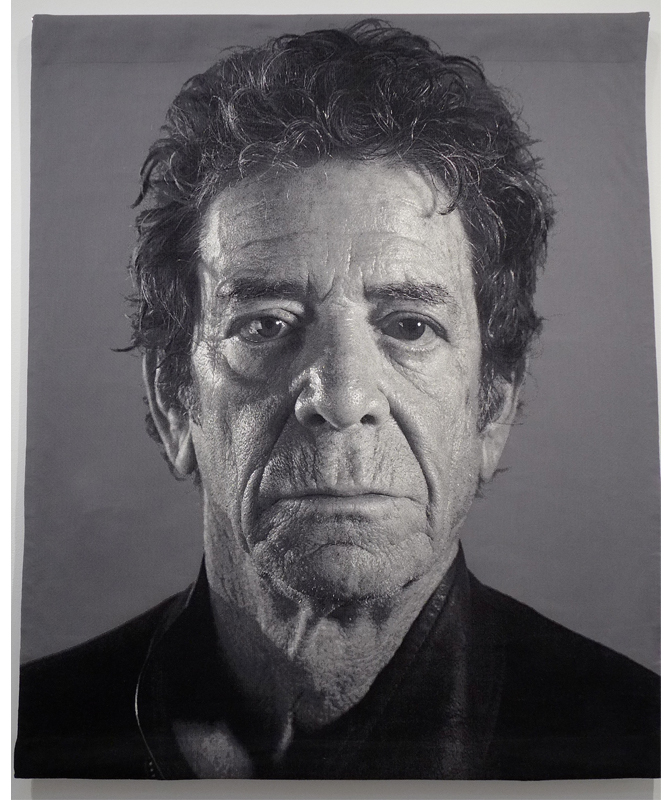
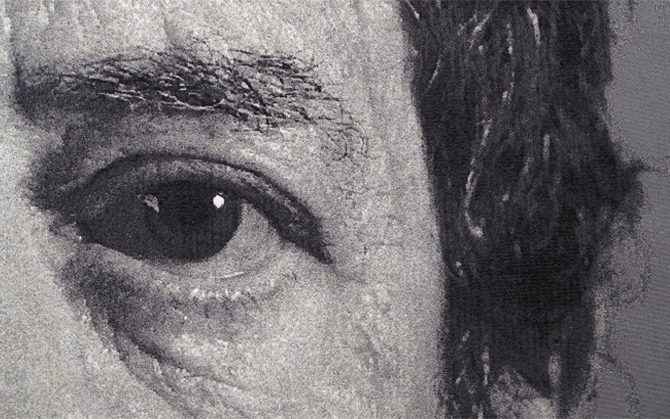
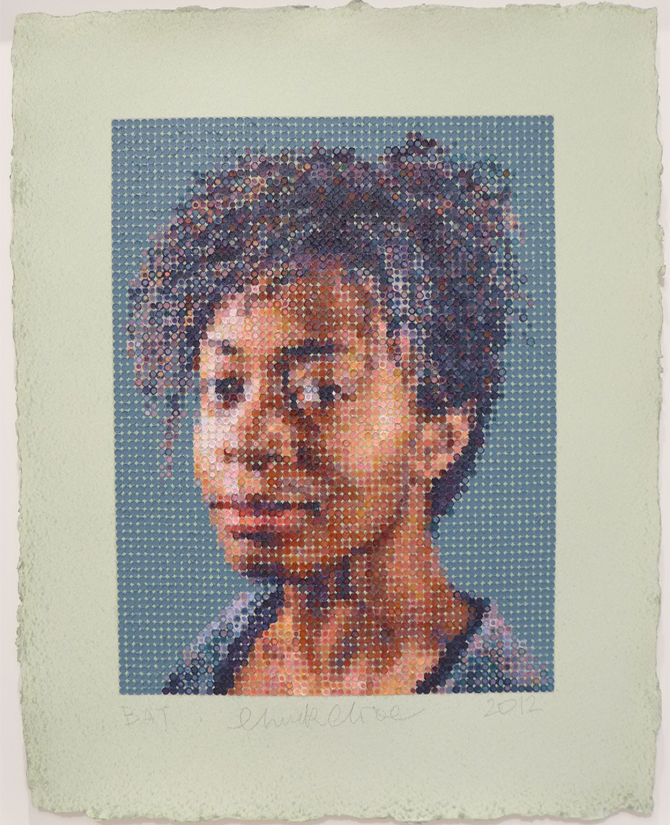
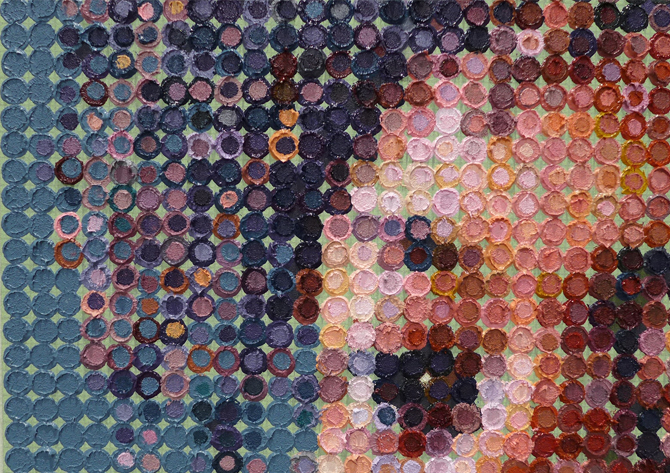
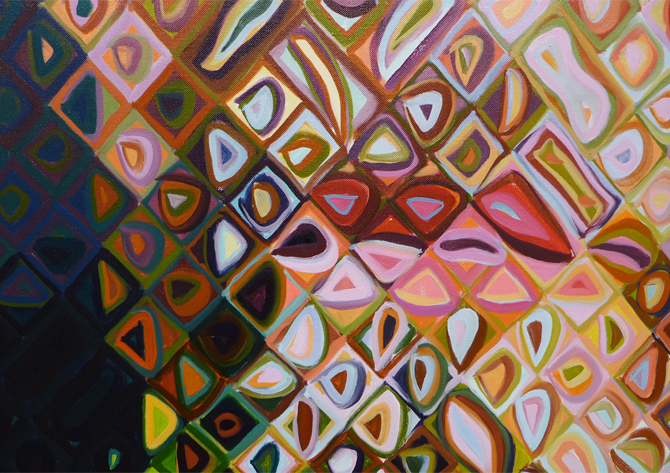
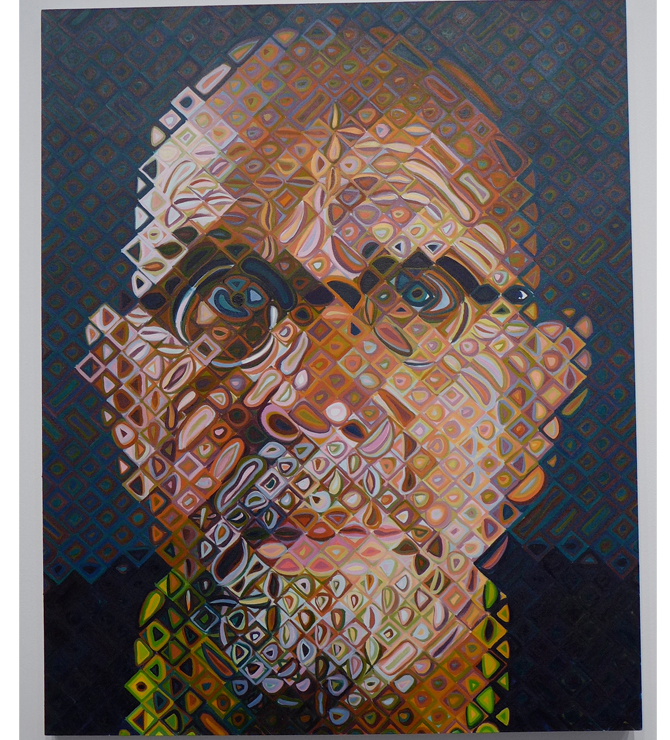
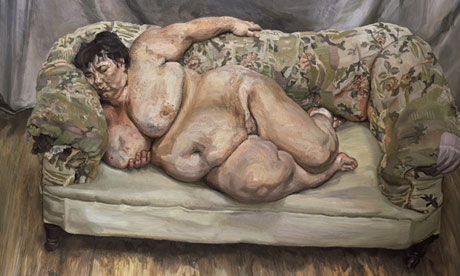
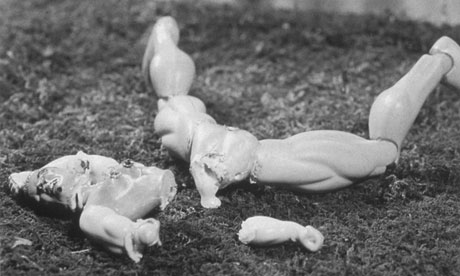
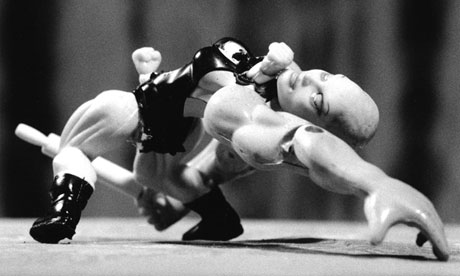
















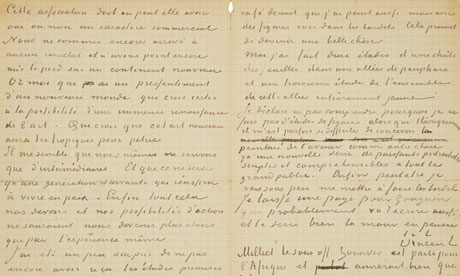
 In this fascinating series of works, Hungarian new media artist
In this fascinating series of works, Hungarian new media artist 

 In the case of Fra Angelico’s Annunciation, Hajdu has taken the liberty to leave a scarf behind for where the Virgin Mary was sitting. In this one scene, we’re left to feel that the angel has just left and the Madonna gone inside. And even if the floor shadows are a little bizarre in Hajdu’s rendering, it only helps us to see that the geometric arrangement of the scene in general is quite peculiar in and of itself.
In the case of Fra Angelico’s Annunciation, Hajdu has taken the liberty to leave a scarf behind for where the Virgin Mary was sitting. In this one scene, we’re left to feel that the angel has just left and the Madonna gone inside. And even if the floor shadows are a little bizarre in Hajdu’s rendering, it only helps us to see that the geometric arrangement of the scene in general is quite peculiar in and of itself.

















